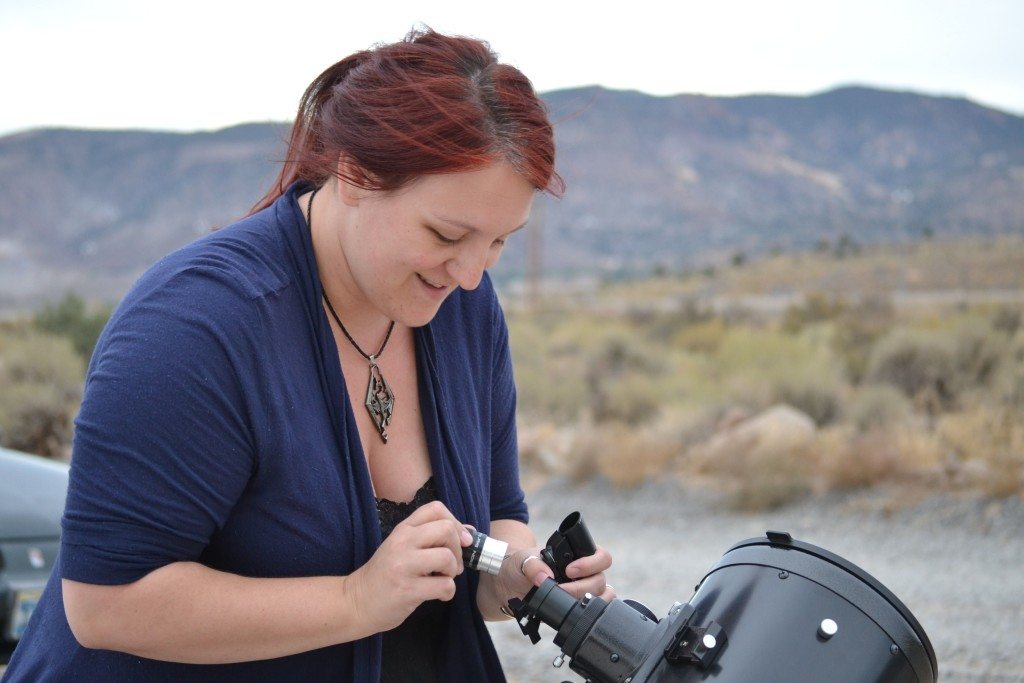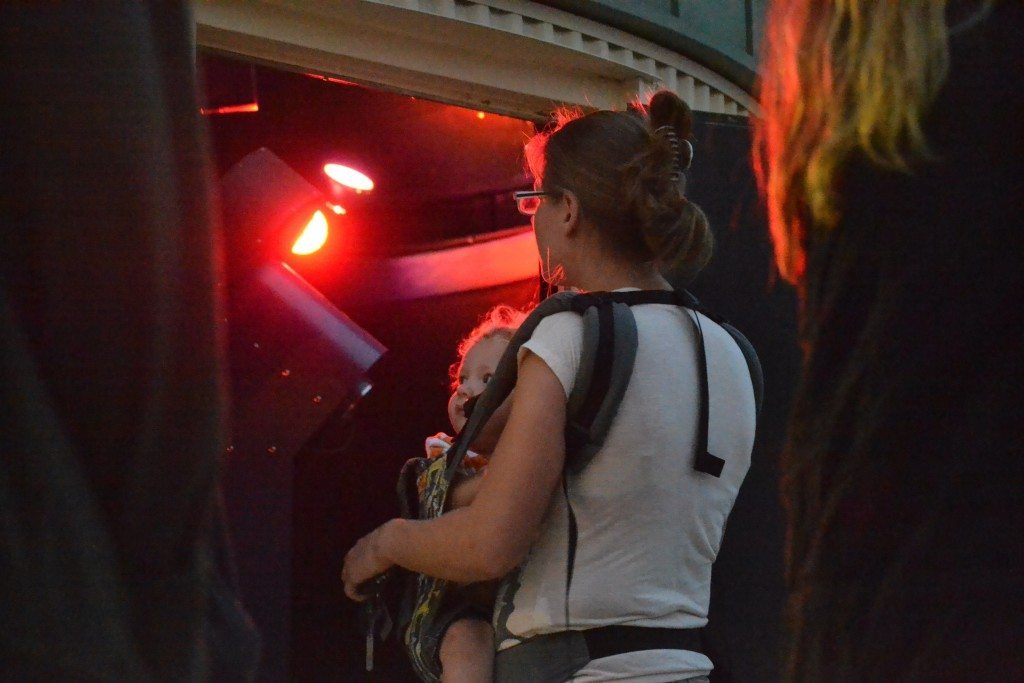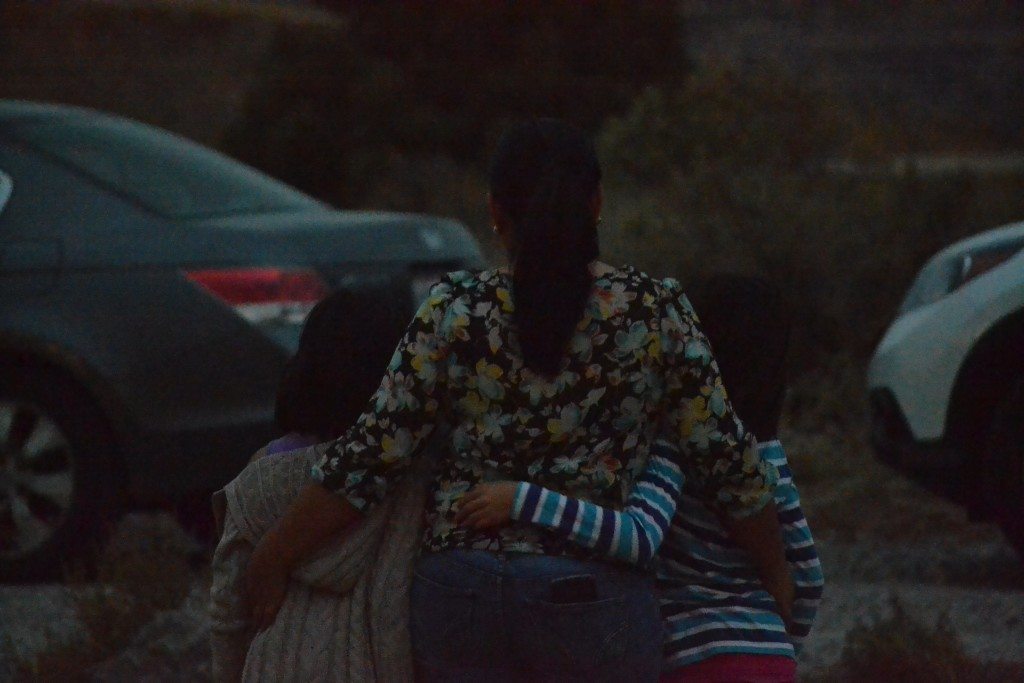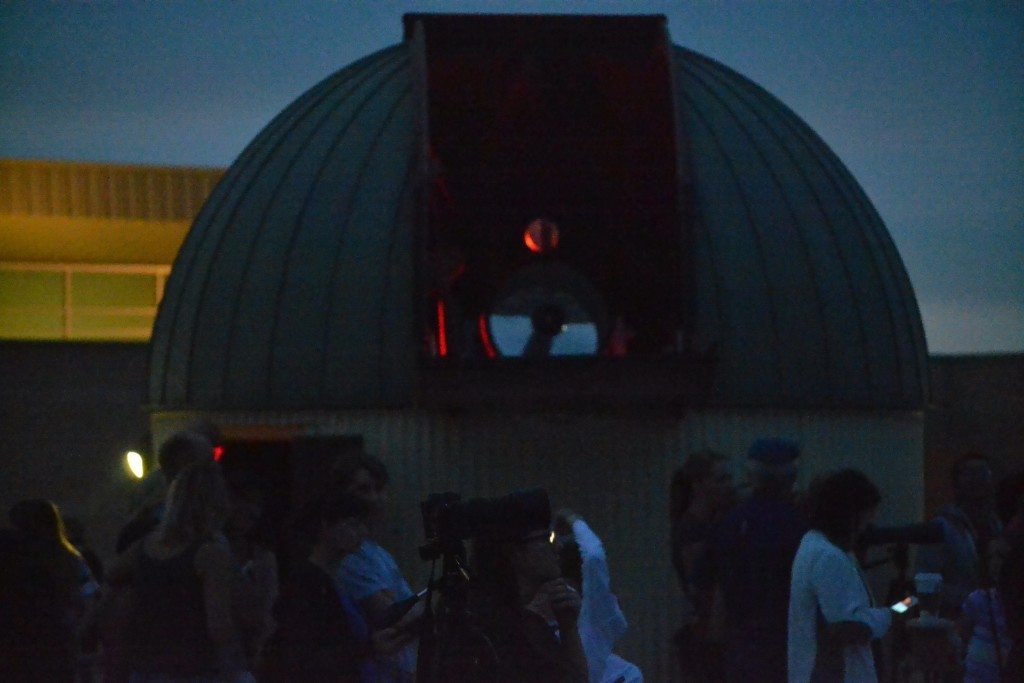
Groups of all ages came to watch the supermoon lunar eclipse in Reno at the MacLean Observatory on Sunday, Sept. 27. The moon was not visible for the total eclipse due to cloud coverage.
By Samantha Johnson
It’s only happened five times since 1910, the last one happened in 1982, and it won’t come again until 2033: it’s the “supermoon” lunar eclipse. Unfortunately for Reno residents, they didn’t get to see much of it due to cloudy weather last Sunday. For Tony Berendsen, developmental technician at the University and owner of Tahoe Star Tours, it was still an exciting event.
“What’s cool about a total lunar eclipse is that everyone sees it,” Berendsen said.
Clouds or not, everyone around the world could see the rare moon, and pictures started flooding Instagram and Facebook around 7 p.m. Several websites, like Space.com, offered live streams of the eclipse, and people of all ages grabbed their telescopes and headed out to the MacLean Observatory on Wedge Parkway.
Berendsen said the reason why a lunar eclipse appears to be red is that the Earth’s atmosphere acts as a refracting lens and the light is bent to the red part of the spectrum.
What made this lunar eclipse stand out, however, was the closer view of the moon, making it a “supermoon.” Berendsen explained that it was in “perigee,” or the moon’s closest point in its orbit to the Earth, and would appear to be 14 percent larger than normal.
“What I love about it is the way you can see the Earth’s shadow,” Berendsen said.
Berendsen also explained how the MacLean family played an integral part in the observatory, and how they donated the 22 inch telescope used to view the eclipse. He talked about Gordon MacLean’s story and how he first started to explore space through a lens at his house near the Mount Rose summit.
“Gordon MacLean was an avid amateur astronomer,” Berendsen said. “This telescope was on the third story of his house. There are few left in the world today.”
MacLean’s telescope, if compared to human sight, has about 3000 eyeballs of viewing power, according to Berendsen. There was a long line of stargazers waiting to test it out long after the 7:11 p.m. mark for the total lunar eclipse or the “umbra.” It lasted until 8:23 p.m., then the moon slowly moved out of the Earth’s shadow into its former, shining glory.
Berendsen answered questions from curious onlookers all night, including why lunar eclipses don’t happen all the time. He said that the moon’s orbit is tilted at about 5 percent, so it sometimes misses the Earth’s shadow. He also said that the Earth is traveling around 1000 miles per hour, which is why we never truly see the proper path of the moon.
While citizens in Reno couldn’t see the rare beauty as well as other places in the world, the supermoon lunar eclipse was still a moment in history for everyone who got the chance to take a peek. The people who missed it will be browsing through the pictures online and anticipating the next one 18 years from now. For more information about the eclipse or just space knowledge in general, Tony Berendsen can be reached at tony@tahoestartours.com.
Samantha Johnson can be reached at tbynum@sagebrush.unr.edu or on Twitter @SamRayJohnson.
- Aubree Portune sets up her telescope on Sunday, Sept. 27 to watch the supermoon lunar eclipse at the MacLean Observatory in Reno.
- People even brought their pets to the supermoon lunar eclipse viewing at the MacLean Observatory on Sunday, Sept. 27 in Reno.
- A woman and child enter the telescope holding on Sunday, Sept. 27 to watch the supermoon lunar eclipse in Reno.
- A family embraces as they watch the supermoon lunar eclipse in Reno at the MaclLean Observatory on Sunday, Sept. 27.
- The 22 inch MacLean telescope on Sunday, Sept. 27 in Reno during the supermoon lunar eclipse.














